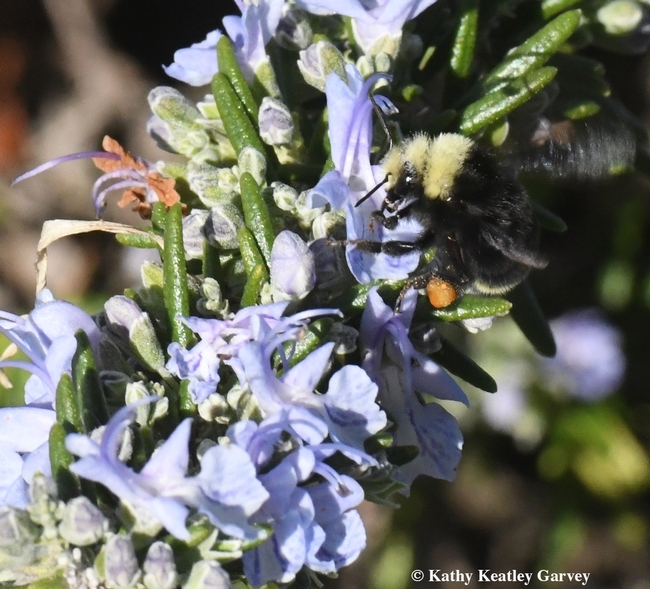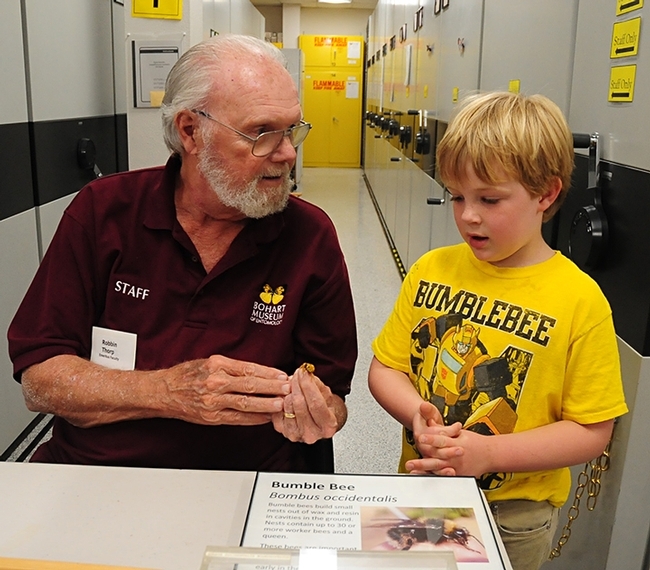It was the morning of Jan. 1, 2018, a year and four days ago.
While strolling the grounds of the Benicia Capitol State Historic Park, we captured images of yellow-faced bumble bees, Bombus vosnesenskii, nectaring on jade, Crassula ovata. They were packing cream-colored pollen from the jade. The same day, we spotted the same species nectaring on rosemary, Rosmarinus officinalis, by the Benicia marina, but packing orange pollen, probably from the nearby California golden poppies.
Thus began our Year of the Insects.
So far this year, we haven't spotted a single bumble bee in Solano or Yolo counties. It's too early in the season (except for hot spots in Benicia, Solano County, where even some almond trees bloom on Jan. 1!)
Nowadays, though, the talk isn't just about "bumble Bees," the insect, but "Bumblebee," the movie, as in the 2018 American science fiction action film. It's about a Transformers' character of the same name, described as "battle-scarred and broken."
Why is the insect spelled "bumble bee," two words? The Entomological Association of America (ESA), in its newsletter, Entomology Today, explains: "...entomologists use two words if a common name accurately describes the order to which a particular insect belongs. For example, all true flies belong to the order Diptera, so true fly names will be spelled using two words by entomologists--house fly, horse fly, pigeon fly, or stable fly, for example. However, despite their names, dragonflies and butterflies are NOT true flies --their orders are Odonata and Lepidoptera, respectively — so they are spelled as one word." (Check out the ESA Comman Names of Insects Database.)
So there you have it: bumble bee, the insect, and Bumblebee, the movie.
And sometimes there's a serendipity moment when the two meet.
We remember back in April of 2017 when native pollinator specialist Robbin Thorp, distinguished emeritus professor of entomology, UC Davis Department of Nematology and Nematology, was displaying bumble bees at a Bohart Museum of Entomology open house.
Thorp, a global authority on bumble bees, is the author of Bumble Bees of North America: an Identification Guide (Princeton University) and California Bees and Blooms: A Guide for Gardeners and Naturalists (Heyday).
So was he ever surprised when in a defining moment, 6-year-old Adne Burruss of Irvine (his mother, Sigrid, is a geneticist and UC Davis alumna) walked up to him wearing a Bumblebee t-shirt. Adne wanted to look at the "other" bumble bees.
So do we! So do we!
Attached Images:

A yellow-faced bumble bee, Bombus vosnesenskii, nectars on rosemary on Jan. 1, 2018 at the Benicia marina. (Photo by Kathy Keatley Garvey)

UC Davis distinguished emeritus professor Robbin Thorp, a global expert on bumble bees, chats with "Bumblebee" movie fan, Adne Buruss, at a Bohart Museum of Entomology open house. (Photo by Kathy Keatley Garvey)